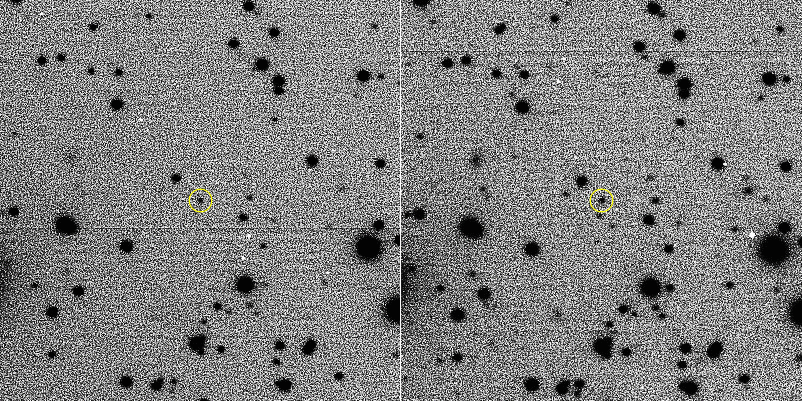Found! Weird Asteroid in Jupiter's Orbit Is 1st Interstellar Immigrant

Another interstellar asteroid has been spotted in our solar system — and this one is a long-term resident rather than a visitor, a new study reports.
Last October, astronomers using the Pan-STARRS telescope in Hawaii announced the discovery of a weird, needle-shaped rock zooming past Earth on a very long-distance trek. This asteroid, which was subsequently named 'Oumuamua (Hawaiian for "scout"), is the first known interstellar object ever observed in our solar system.
But 'Oumuamua is just passing through. This other interstellar asteroid, known as 2015 BZ509, has shared Jupiter's orbit since the solar system's infancy, 4.5 billion years ago, according to the new study. [Solar System Explained from the Inside Out (Infographic)]
2015 BZ509 was discovered in November 2014, also by Pan-STARRS (which is short for "Panoramic Survey Telescope and Rapid Response System," in case you were wondering). The space rock is an oddball: Its orbit is "retrograde," meaning 2015 BZ509 moves around the sun in the opposite direction of Jupiter, Earth and most other bodies in the solar system.
"How the asteroid came to move in this way while sharing Jupiter's orbit has until now been a mystery," astronomer Fathi Namouni of the Côte d'Azur Observatory in France, who led the new study, said in a statement. "If 2015 BZ509 were a native of our system, it should have had the same original direction as all of the other planets and asteroids, inherited from the cloud of gas and dust that formed them."
Namouni and study co-author Helena Morais, who's based at São Paulo State University in Brazil, performed computer simulations that traced 2015 BZ509's movements backward through time.
"We showed that 2015 BZ509 has been a retrograde co-orbital of Jupiter over the age of the solar system, i.e., since 4.5 billion years ago," Morais told Space.com via email. "The solar system could not produce retrograde orbits so far back in time, so the only option left is that of capture from another system."
Breaking space news, the latest updates on rocket launches, skywatching events and more!
Such thefts were much easier back then. The sun was born in a dense cluster of stars, which all coalesced from the same giant gas cloud. There would have been far more gravitational jostling among these sibling stars and their infant planets than these now-far-flung solar systems experience today, the researchers said.
So, 2015 BZ509 may not be the only interstellar immigrant out there. Indeed, some of the objects on polar orbits out beyond Neptune could have originated elsewhere as well, Morais said.
The new study was published online today (May 21) in the journal Monthly Notices of the Royal Astronomical Society: Letters.
Follow Mike Wall on Twitter @michaeldwall and Google+. Follow us @Spacedotcom, Facebook or Google+. Originally published on Space.com.
Join our Space Forums to keep talking space on the latest missions, night sky and more! And if you have a news tip, correction or comment, let us know at: community@space.com.

Michael Wall is a Senior Space Writer with Space.com and joined the team in 2010. He primarily covers exoplanets, spaceflight and military space, but has been known to dabble in the space art beat. His book about the search for alien life, "Out There," was published on Nov. 13, 2018. Before becoming a science writer, Michael worked as a herpetologist and wildlife biologist. He has a Ph.D. in evolutionary biology from the University of Sydney, Australia, a bachelor's degree from the University of Arizona, and a graduate certificate in science writing from the University of California, Santa Cruz. To find out what his latest project is, you can follow Michael on Twitter.
